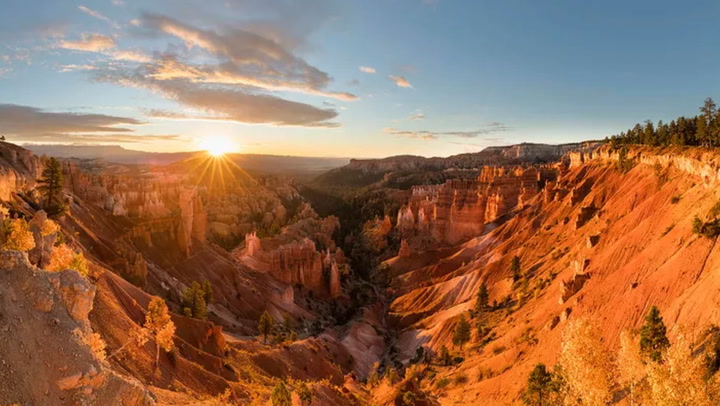Summary
Introduction to Bryce Canyon National Park
Anyone who has visited the red rock formations at the Bryce Amphitheater or experienced the sun going down near Sunset Point knows that Utah’s Bryce Canyon National Park is an extraordinary location. The park spans 56 square miles and is renowned for housing the largest concentration of hoodoos (irregular, spire-shaped rock columns) in the world. Established as a national monument on June 8, 1923, officials aimed to protect the area for its “unusual scenic beauty” and “scientific interest” before it was later designated as Bryce Canyon National Park.
100th Anniversary Celebration
This June, Bryce Canyon will observe its 100th anniversary by reflecting on the transformations that have occurred over the past century. According to the park’s centennial celebration page, notable changes include a retreat of the rim of the Bryce Amphitheater by an average of 22 inches, the impact of 18,000 freeze and thaw cycles that have shaped countless hoodoos, and 36,889 sunrises over Thor’s Hammer.
To honor the park’s evolving landscape and commemorate 100 years of welcoming explorers from around the globe, a series of events and celebrations are planned for June. A prominent photo exhibit at the Bryce Canyon Lodge will run from April 1 to November 30. It will showcase captivating images depicting the park’s evolution over the past century. Furthermore, on the park’s official anniversary—June 8, 2023—a special ceremony will take place alongside a canyon rim performance by The Piano Guys, a beloved musical group from Utah. While tickets for this anniversary celebration are free, they require advance reservations.

Bryce Canyon Astronomy Festival
The following week, from June 14-17, the annual Bryce Canyon Astronomy Festival will occur. This event coincides with June’s new moon and features constellation tours and ranger-led evening programs that highlight the park’s incredibly dark, star-filled skies. Notably, it is Utah’s fourth national park to receive dark sky certification from the International Dark-Sky Association. This designation recognizes natural areas with low light pollution at night, benefiting nocturnal wildlife and creating ideal conditions for stargazing.
National Geographic Expeditions
Alongside park-sponsored events, National Geographic Expeditions will offer a multi-national park tour that includes a visit to Bryce Canyon during its anniversary month. This expedition begins and ends in St. George, Utah, while also exploring the Grand Canyon in Arizona and Zion National Park in Utah. Led by a National Geographic expert and expedition leader, participants will gain insights into the geological history shaping these magnificent parks, with a blend of hiking and stargazing opportunities.
The eight-day National Geographic Expedition will operate twice over the summer, specifically during Bryce Canyon’s anniversary month: June 3-10 and June 18-25. For detailed information about these National Park trips, visit www.nationalgeographic.com, and for further insights on Bryce Canyon’s 100th anniversary, check nps.gov.





